In need of modernisation? The UK’s housing crisis close up
- Published

When Steve's flat was struck by lightning in 2011, he thought all his prayers had been answered. Could he free himself from a property which - in just four years - had become a financial burden?
"I really hoped [the insurers] would just write off this building and pay off our mortgages. But that didn't happen," he explains.
The UK property market, much like Steve's lightning strike, is often a matter of fate - subject to forces out of an individual's control. Across the country, there are more than 27 million homes, but many more are needed. In the 30 years to 2021, three million fewer properties were built than in the previous 30. The population, however, has increased by more than nine million.
The BBC has travelled the country to meet people whose stories are snapshots of the UK's housing crisis - and Steve's, in Middlesbrough, is one of regret.
From the balcony of his one-bed flat there are glimpses of local landmarks on the horizon - the town hall clock and Tees Transporter Bridge. Fourteen years after he bought the property - and a decade on from the lightning strike - it is barely worth half of what he paid for it.
"I definitely wish I hadn't bought this place," he says.
The electrician, now 35, bought at the end of 2007 for £96,000 - when the housing market was peaking ahead of a massive crash and global recession. He had been living at his mum's on a council estate, when one day he spotted a sign for a new-build estate where developers were offering to pay purchasers' deposits for them - 5% of the purchase price.
"They had a show home done up with nice interiors. It was very appealing. It took 25 days from the moment I walked in, to being handed the keys," he recalls.
"It felt great. My mum was very proud to see me wanting to go somewhere in life."
As a young single man, the first few years as a homeowner were good. But after a while, he met a partner and wanted to sell the flat and move in with her. He discovered, however, that following the global financial crash his property was worth £7,000 less than he had paid for it. He didn't want to sell for a loss.
And what's more, he was tied in to his mortgage deal and the penalty for quitting early was £6,000. He decided to rent the flat out, rather than lose all that money.
Negative equity in 2021
Now, more than a decade on, Steve is back in the flat on his own. His story of negative equity - where the mortgage debt owed on his property is more than its value - is not so common these days. House prices have not taken sharp falls recently and interest rates are low.
But Steve has other problems too.
The Grenfell Tower fire - which in June 2017 killed 72 people in a block of flats in west London - exposed the lethal danger of some types of cladding on blocks of flats, and many residents are now liable to pay for their removal. The cladding on Steve's block is getting reviewed, but he says the freeholder has already started taking money from residents to cover costs - £2,400 per flat.
Then there are the service charges. They are now £1,200 a year - more than double what they were in 2007.
More than 4.5 million people own leasehold properties in England and increased ground rents and service charges have left many of them out of pocket. From 2022, the government wants owners of new build flats to be charged zero ground rent. But that won't help Steve. He doubts he will be able to sell any time soon.
"One similar flat sold recently for £53,000. Two went for only £39,000. I think people [in debt] have handed keys back to mortgage companies which have sold the properties for whatever they could get.
"The leasehold thing definitely plays a big part, now everyone is aware of what owning a leasehold property means."

Steve's story, and the others featured here, can be heard in a new series on BBC Radio 4 - starting Monday 4 October at 13:45 BST or listen online

Steve bought at the top of the frenzied 2005-07 boom, but has been unlucky on multiple fronts - says Prof Paul Cheshire of the Centre for Economic Performance at London School of Economics (LSE).
"The British housing market is notorious for booms and busts, but the cheaper sector in Middlesbrough was one of the most volatile of all."
Prices went up by 50% in just two years, then fell off a cliff - says the professor - with Steve buying at the very top of that boom, having been drawn in by the developer's offer to pay his deposit.
"He then got caught in a market collapse and was lumbered with an escalating service charge."
And in the years after the worst financial crisis, Middlesbrough's housing market has not seen strong rising demand - says Prof Cheshire - so prices haven't risen as fast as in other parts of the country.
The reality of homeownership for Steve has been nothing like he imagined. His dream became a nightmare. While for a young couple in west Wales, they can only fantasise about buying a property of their own.
Life in a caravan
Home for Rachel and Angus is a £400-a-month rented static caravan on a farm near the pretty village of Solva - not far from St Davids. They have now struggled through one cold winter.
"The walls are only 5mm thick," says Angus. "We didn't spend much time in the bedroom in winter. It gets damp. We slept in the living area with a gas burner on."
Rachel - who grew up locally - is a housing officer. Angus works with young people in residential care. Any mortgage Rachel and Angus could get wouldn't be big enough to allow them to buy a property in the area.
The couple say they have friends living locally in tents and yurts - because finding a house, flat or even caravan to rent long-term at an affordable rate is so difficult. It is because Solva is so popular with second-home owners, says Rachel.
"They can make so much money with Airbnbs and holiday lets, we can't compete," says Rachel. "At some point, if we can't find anywhere to rent, let alone buy, we are going to have to move away. Living like this is not sustainable."
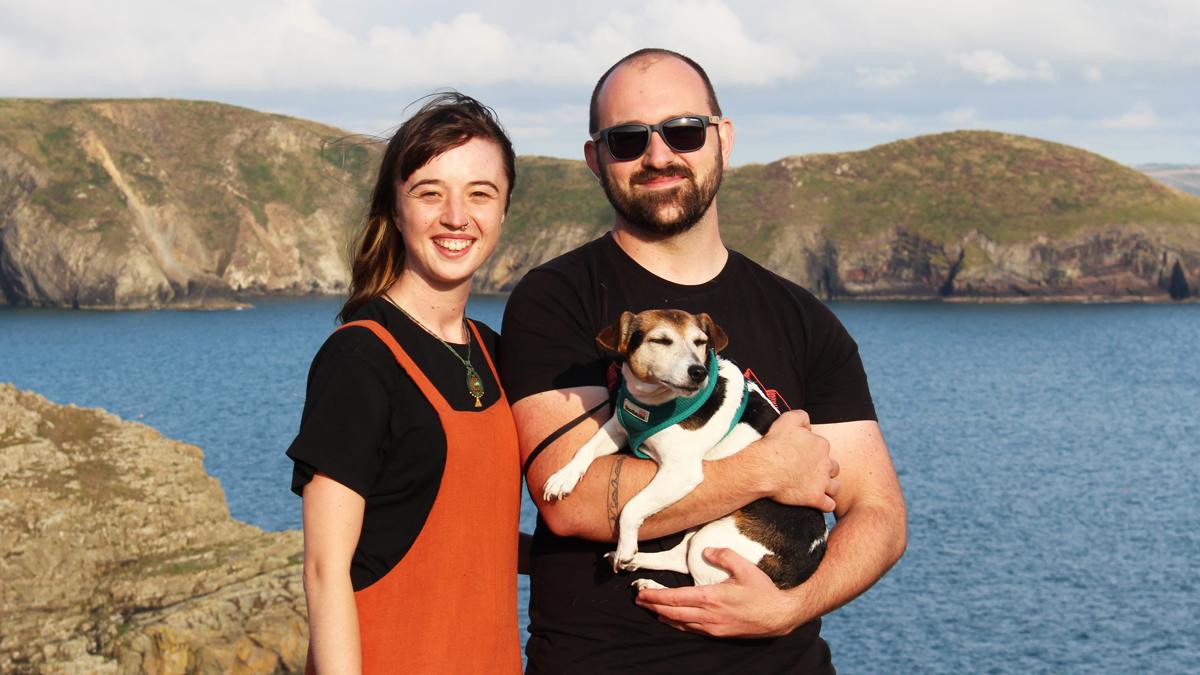
Rachel, Angus and their dog Cadi
Walking along the Pembrokeshire Coast Path, Rachel points out a stretch of development land on the edge of Solva. The building plots alone are selling for around £500,000 - that's before a brick is laid. Finished homes - with spectacular, unspoiled views over the sea - would sell for much more.
Pembrokeshire's remoteness means it feels like the end of the line - both metaphorically and physically - says Angus. "It often feels like we get forgotten about."
Arguments about both the ethics and practicalities of second-home ownership have raged in Wales for decades. But Prof Paul Cheshire says the situation is now more acute:
"The rich have been getting richer relative to the rest of us. So demand for houses in really outstanding locations has increased, and those prices - relatively - have gone up more than in other areas.
"But outside the Pembrokeshire Coast National Park - eight miles away - there are decent houses available for £75,000."
In Solva, though - where three generations of Rachel's family live and where she would like to stay - there may be some hope. With friends and neighbours, Rachel is now a member of a community land trust (CLT), external. It's a democratic non-profit organisation, with an aim of developing land for the benefit of local people.
The trust has helped earmark a local football pitch - owned by Pembrokeshire County Council - as a site for 18 new affordable homes, which would be built by a housing association. The new properties - ranging from one to three bedrooms - would be funded using money from a council tax levy on second homes in the area.
"There are still hurdles to overcome, for example Covid-19 has increased the price of materials," says Rachel. "But we remain hopeful we've overcome the biggest ones now."
There will be a strict application process and there's no guarantee she and Angus will get one of the homes. They know they must be patient.
More than 200 miles away in London, that's something NHS worker Danielle also knows a lot about. She has been saving for 11 years for a deposit to get on the housing ladder.
Back home with Mum
After finishing university, she moved back in with her mum in Tooting. She's now 32 and has a healthy sum banked, but, like Rachel and Angus, her salary just isn't enough to get the mortgage she'd need to buy locally, where she was brought up.
"South-west London has my heart - but I am looking across London," says Danielle. "Coming from a black background, I would like a diverse community."
One-bedroom flats in Tooting are priced upwards of £260,000. Houses like Lydia's - Danielle's mum - sell for more than £700,000.
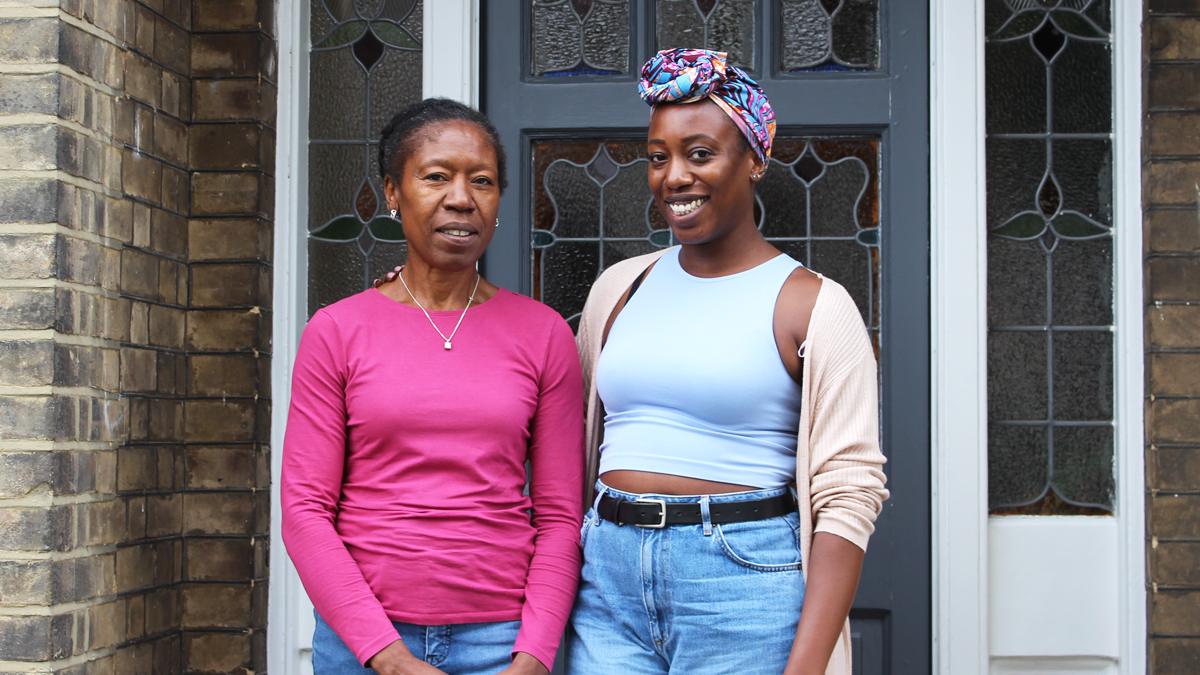
Lydia and Danielle in Tooting
Danielle says she doesn't want to rent privately because it would feel like she was "lining someone else's pockets". She's also sceptical of schemes, aimed at helping key workers and first-time buyers like her.
Shared-ownership would mean a housing association would still own a portion of her property's equity. And a government Help to Buy loan, external - of up to 40% of a purchase price - wouldn't help her get a mortgage based on her NHS salary, she says.
Like generations before her, Danielle wants to be a homeowner. Her grandparents arrived from the Caribbean and bought their three-storey house in Battersea. Her mum, Lydia, first made it onto the property ladder when she bought her council flat at a discount under the Right to Buy scheme.
"I feel really frustrated for Danielle, and there are times when I don't fully understand it and she gets upset with me," says Lydia.
The desire to own a home is now etched in the British psyche, but for many of Danielle's generation it's an increasingly vain hope - through no fault of their own. Both Tooting and Battersea are in the London Borough of Wandsworth - which is now the fourth least-affordable, external local authority in England and Wales in which to buy a home.
Part of London's housing supply and demand problem, says Prof Cheshire, is lack of space.
"There is always opposition to new homes. Whether you want to build high - there are height controls all over London - or whether you build outwards on a few acres of green belt."
Just before the outbreak of World War Two, the green belt was introduced to encircle London with a narrow "girdle" of publicly-owned and accessible open space. In 1955, the green belt area was made 25 times bigger and the government stated, external that approval for urban development on such land should not be given "except in very special circumstances".
The protective ring now stretches, in places, 35 miles from the Greater London boundary. Building on it is almost impossible and seldom without controversy, says Prof Cheshire. And it is the battles being played out on such land across the Home Counties that will have a direct impact on the home-buying dreams of Danielle and other young people in London.
Green belt invasion?
In Kent, in the hamlet of Tudeley near Tunbridge Wells, there are plans for 2,800 new homes. It's green belt land and many residents aren't happy - including Ian and Angela, who have lived in their converted oast house for 35 years.
"We are surrounded by fields where they grow corn, wheat and barley - plus blackcurrants and pears," says Ian. If the Tudeley Garden Village development goes ahead, he says they will be "totally surrounded" by housing.
"From rural to urban - it would be sacrilege."
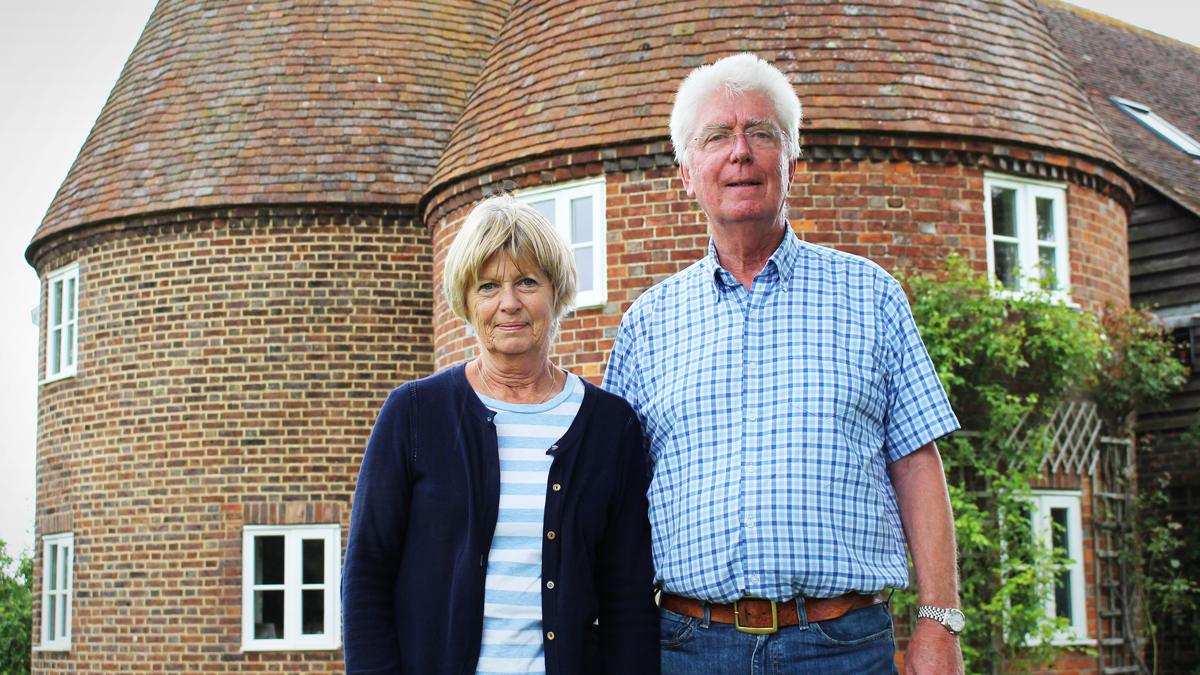
Angela and Ian in Kent
All local authorities in England have house-building targets - and some are doing better than others in terms of delivery. There is huge demand for housing in this part of Kent - and the LSE's Prof Cheshire believes the local council is simply playing catch up.
"[Tunbridge Wells Borough Council] has been building very few houses over a very long period. As a result, house prices have grown hugely, up 422% since 1997. Affordability has deteriorated.
"It's almost impossible to provide land for new homes there without releasing some green belt land. So much of the area is either green belt or designated as an Area of Outstanding Natural Beauty (AONB)." And the latter, he says, "you really don't want to build on".
Locals fear a four- or five-fold increase in Tudeley's population, to more than 10,000 residents, would strain local services. The council says new infrastructure will be "planned and carefully delivered to positively transform the borough and avoid the ad hoc approach so often seen with new development". It also says 40% of homes will be "affordable", officially defined, external as 80% of market price to rent or buy.
Very local roads and services might be upgraded - says Prof Cheshire - but there's no guarantee to upgrade other infrastructure, such as the wider road or rail network in that part of Kent.
Ian and Angela are vowing to stay put, but if they wanted to move, Angela says they would be stuck.
"We can't sell our house. Nobody is going to buy properties around here, because we don't know what's going to happen."
They moved to Tudeley in 1986 precisely because the area is so rural. They argue that everyone will benefit from the green belt staying as it is. But what is the alternative?
The challenges of brownfield
Could developing more brownfield sites - land that has previously been built on - be more straightforward? Not necessarily. They can throw up serious challenges of their own - says Prof Paul Cheshire - often after the first spade is dug.
"There are always surprises on old industrial land and they are always bad surprises."
In south-west Belfast, Katrina, 28, recently moved into a brand-new, three-bed townhouse built on a brownfield site. They are among the first residents at Black's Gate - which will eventually have a mix of 244 socially-rented and affordable privately-owned properties.
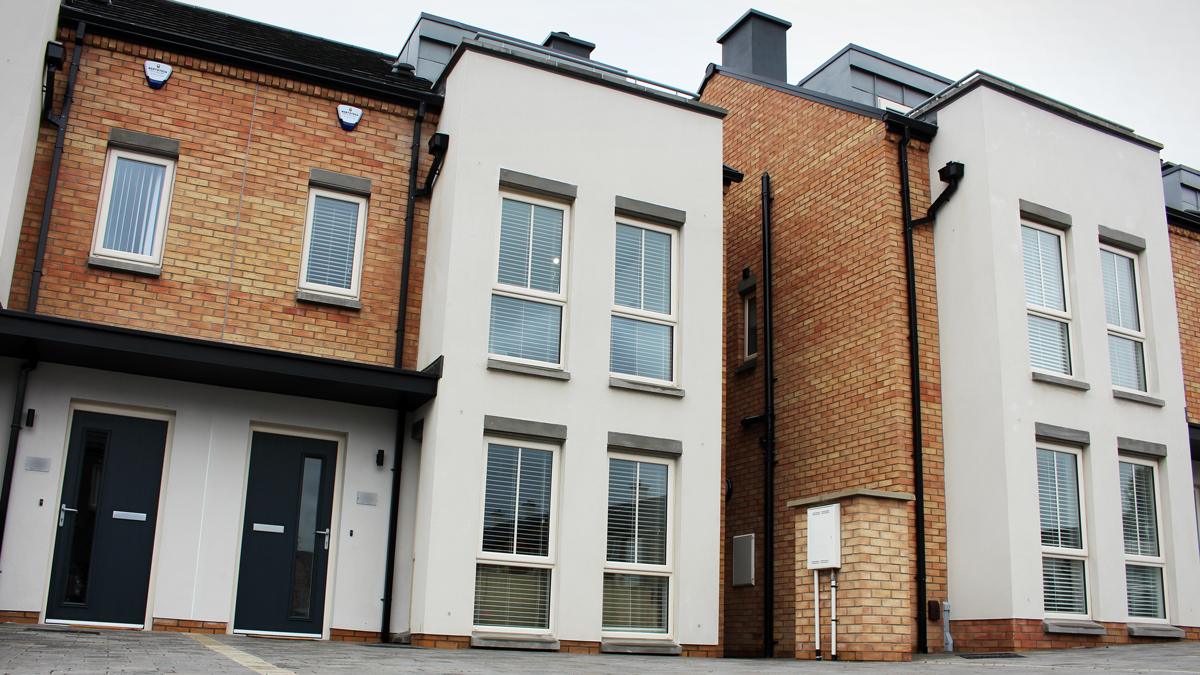
Katrina's new home
Black's Gate is being built on the site of a former car parts factory. It took five years for planning permission to be fully approved - only then could the daunting task to reclaim the land begin. Radius Housing - the company behind the development - admits the site has had its challenges.
"There was a lot of asbestos." says Anita Conway, Director of Development. "It was a 10-month job to demolish it and take it away. We had to make sure it was all audited properly, to prove it had gone."
This part of Belfast needs new housing, but supply issues - because of Covid and Brexit - mean work at Black's Gate is about 12-to-14 months behind. And, says Anita Conway, other sites for new homes are hard to find.
"You're closed in by mountains [to the west] and unfortunately we still have some legacy issues. There are still peace walls and certain areas which are very difficult to develop because of the political situation."
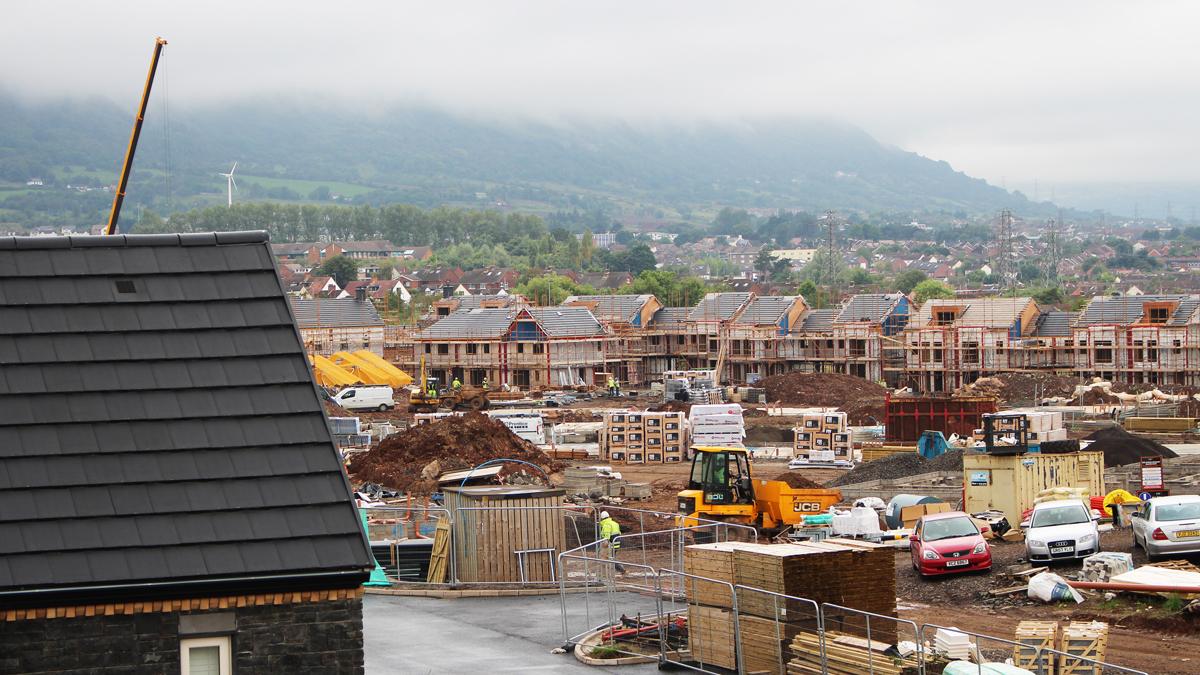
View over Black's Gate in Belfast
But standing on her new balcony, Katrina is pleased to be in her new home at long last with her partner, Jordan.
"It just felt natural, the right thing to do. It's been great. A few of my friends rent and compared to them, it's so much cheaper."
Together, these personal stories help illustrate some of the wider problems with the UK's housing market. For Prof Paul Cheshire of the LSE, the root cause is clear.
"We haven't built enough homes annually for more than a generation.
"And now, because either land prices have become so expensive - or development sites so contentious - we struggle more than ever to build affordable housing.
"I fear the result, unfortunately, will continue to be repeated boom and bust."

These five stories - and five more from Shetland, Newcastle, Liverpool, Crawley, and Cornwall - feature in A Home of Our Own, presented by Lynsey Hanley.
It starts on BBC Radio 4 on Monday 4 October at 13:45 BST or listen online.